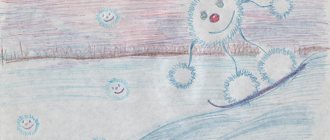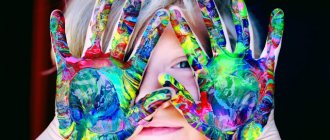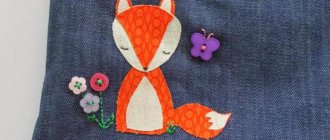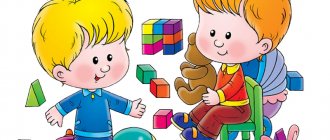Diagnostics: scientific approaches, principles and criteria
It is impossible to diagnose creativity without studying and applying the science on which the methods, principles and criteria are based.
Scientific approaches to research
In the process of studying the disposition to creativity, two approaches are distinguished.
- The study of creativity as a process of creative cognitive activity. It is based on the interaction of intelligence, speculative abilities, and their manifestation in practice.
The following people worked on the approach: D. Guilford, S. Mednik, A. Ponomarev, E. Torrence, S. Taylor. The principles are based on research that shows how intelligence influences the process of creating original new ideas. Different people can be observed.
- A study of the creative personality itself.
Here we are talking about the complex of creative abilities of one person. The approach is based on creating a “portrait” of a creative personality. This direction was developed by: A. Maslow, D. Bogoyavlenskaya, F. Barron.
Principles of the methodology for diagnosing creative abilities
When choosing methods for studying creative abilities, it is necessary to take into account the child’s age and testing conditions.
Diagnostic techniques are aimed at identifying stereotypical thinking. The main indicator of creativity is distance from cliches, a complete rejection of stereotypes.
Uniqueness is determined by the frequency of unusual responses. Uniqueness is assessed by the ratio of the number of new ideas and the total number of responses.
The result of a study may not always reflect the degree of a person’s ability to think creatively. Creativity can manifest itself spontaneously in every person and be unregulated.
The imperfection of all developed test methods is based on a general approach. They do not take into account the “surprise effect” of the manifestation of individual characteristics in a specific situation.
Criteria for evaluation
Indicators by which the level is determined:
- speed and ease of creativity (the number of proposed options during the task is counted);
- “flexibility” of answers (ability to switch);
- originality (frequency of repetitions of the same answer).
A convenient and simple way to test creativity is the test developed by Alice Paul Torrance. It consists of three parts that characterize the type of creativity:
- verbal,
- fine,
- sound.
The time for completing the test is not strictly limited, at the discretion of the teacher. The following criteria are considered for assessment:
- Fluency/speed – the number of answers given over a period of time.
- Variability of answers (flexibility).
- Unusuality (exclusivity, originality).
- Details.
The studies carried out determined the evaluation criteria for the benchmark.
- Attention (focus on the task).
- Versatility (multiple approaches).
- Flexibility (ease of switching from one statement to another).
- Originality (rejection of cliches and stereotypes).
- Variability (variety of options).
- Specificity (certainty and clarity of approach).
- Abstractness (the ability to move away from the reality of the world).
- Harmony (logic and sequence of sentences).
- Independence (lack of fear when choosing a solution).
- Openness of perception (perception of novelty and expression of interest).
You can use the methods presented in the article at school, additional education centers, and at home. Diagnostic methods are adapted to each child, taking into account the characteristics of his development.
About the development of creative abilities of preschoolers and primary schoolchildren in the following video:
Keys to Developing Creativity
In order to purposefully develop creativity and grow creatively, the basic concepts are defined: the “keys” to launching. They are understood as factors that contribute to the emergence, development and further use of a child’s own potential.
- Knowledge.
- The ability to control the situation.
- Experience.
It is necessary to accumulate positive experiences of children who have learned to use creative thinking. It is important to share this experience with other students.
- Support for leaders.
Singling out children with pronounced abilities so as not to “over-praise” or belittle the efforts of others. Raising in successful children a willingness to share and experience in achieving success.
- Awards and promotions.
- The power of emotions.
Keeping your child in a good mood even when an attempt fails encourages “belief next time.”
- Broad outlook.
Reading, interviews, and discussion of what you read develop the ability to be creative.
- Independence, lack of an “anchor”.
Children who can easily switch from idea to idea find it easier to be flexible.
- Ability to play.
- Persistence.
- The ability to empathize.
Children who can hear others have the gift of “group” creativity. They are able to perceive the unrealized ideas of other children, add something of their own to them and present them as a joint solution.
- Developing self-respect.
- Inventiveness, open-mindedness.
- The ability to go beyond.
Creating combinations of ideas and solutions, combining ideas into groups according to direction stimulates the development of creativity.
- Introspection.
Summing up the results of a test, game or survey should encourage the child to develop further, and not “get hung up” on an unsuccessful result.
- Balance between feelings and thinking.
- Courage, self-confidence.
- Ability to take risks.
It is necessary to explain to the child that not all, even the most daring creative decisions are doomed to success. The willingness to take risks and fail should encourage further improvement of the idea.
- Understanding and prioritizing creativity.
Thinking creatively more often than is usually possible is the motto of every day.
- Responsibility.
This is a potential that will not allow you to pass off other people’s ideas as your own. At the same time, responsibility must be different from routine. It should not interfere with the implementation of creative ideas.
- Discipline.
The relationship between inclinations and abilities
A pronounced inclination to any calculations or measurements, the manifestation of logic in all matters, the desire to systematize data indicates a children’s predisposition to the exact sciences - mathematics, physics or chemistry.
A craving for musical works, constant purring of melodies, an excellent memory for musical works indicate musical abilities.
The child cannot be torn away from the book, he swallows whole volumes of fiction, reads works outside the curriculum, maybe even composes himself? This speaks of creative literary abilities.
Returning from kindergarten or school, the child not only tells, but also shows what happened during the day, imitates the behavior of loved ones, and takes part in creative amateur performances with pleasure. This is a born actor. You need to develop your theatrical skills.
Usually children cannot be kept away from drawing. But if your child spends almost all his free time with pencils or paints, loves to sculpt, and on all holidays you receive a gift created by his hands, the sphere of his creative abilities lies in the fine arts.
From preschool age, the child shows dexterity and dexterity, runs well, easily withstands the most serious loads, and should be considered a future brilliant athlete.
If you have a lot of construction toys in your home, and your child shows a great interest in complex mechanisms, he or she most likely has technical abilities.
Many friends, ease of communication not only with peers, but also with adults, the ability to establish contact even with strangers speak of communication skills. If your child feels like a duck to water among completely strangers and easily involves them in the game, social abilities are evident.
How to identify a child's abilities
There are several practical methods for identifying the unique abilities and creative inclinations of children. The first two are more suitable for studying preschool children, the latter is relevant for working with schoolchildren.
- Analyzed observation. A simple method will reveal what the child shows true interest in, and what activities bring nothing but boredom. Advice: Most often, the child asks exactly what interests him the most. Be attentive to his questions, and you will be able to understand his range of interests.
- Game observation. During play, preschool children open up as much as possible. In a group game, it is easy to identify leadership qualities and the ability to communicate with other children. Watching a preschool child play with dolls or cars will allow you to understand how developed imagination and logic are.
- Tests, surveys. Such methods are used when it is difficult to identify the inclinations of school-age children or to reinforce previously obtained results. Parents can conduct tests or surveys themselves; it is better to consult a specialist about the results.
Who and where will reveal the child’s abilities?
There are three places to identify a child’s abilities and inclinations - kindergarten, school and, of course, family. In this case, the main role falls on the family. Teachers of a preschool educational institution work within the framework of a specific program aimed at mass education and upbringing of children. There is little time left to determine individual qualities. And although the baby spends most of his time in kindergarten, the main role will belong to the parents.
At school, where a teenager receives a huge amount of knowledge, the same problem occurs. The focus of the traditional curriculum on mass learning leaves teachers very little opportunity for a strictly individual approach to everyone in the class.
The only place where a little person receives maximum attention is the family. It is the parents who bear the credit for the timely identification and subsequent development of a new member of society with a set of unique qualities and abilities.
Remarkable fact
The story of Thomas Edison is indisputable proof that only thanks to parents a child gets a chance to become an outstanding person.
As a little boy, Thomas returned from school with a letter from his teacher. The mother could not hold back her tears when she read the letter. She even read it to her son: “Your child is too brilliant for our school, so take care of his education yourself.”
Many years later, while sorting through the family archive, Thomas found a letter from a teacher to his mother. “Your son is mentally retarded. We cannot continue to teach him at school with other children. We strongly recommend that you educate him at home” - this is what was actually written in that message. When the truth was revealed, Thomas Edison was world famous as an inventor.
The correct approach to a child, determining his abilities is the main guarantee of the future successful life of a little person.
Diagnostics to identify creative abilities in primary schoolchildren
It is necessary to diagnose creative and mental abilities from an early age.
This reveals the child's development indicators. The range of abilities depends on physical health, perception of the surrounding world, upbringing and psycho-emotional state:
- minimal manifestation (lag);
- age-appropriate level (normal development);
- manifestation of a high level (anticipation).
The main goal of diagnostics is the timely identification of lagging and gifted children. This allows us to develop further activities aimed at the further development of schoolchildren.
Common diagnostic methods include testing:
- graphic;
- oral;
- situational.
To achieve the most effective result, the techniques are combined.




